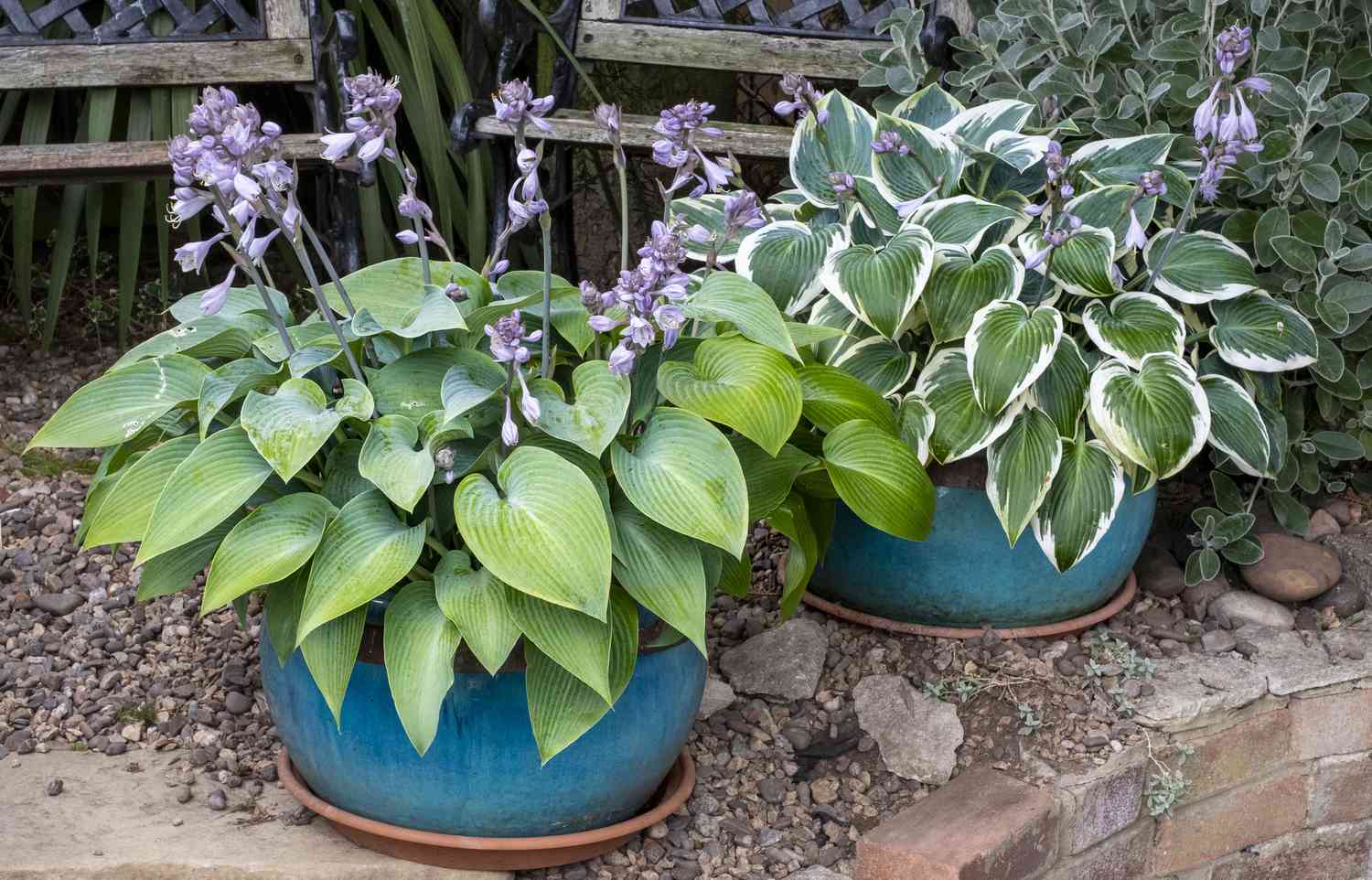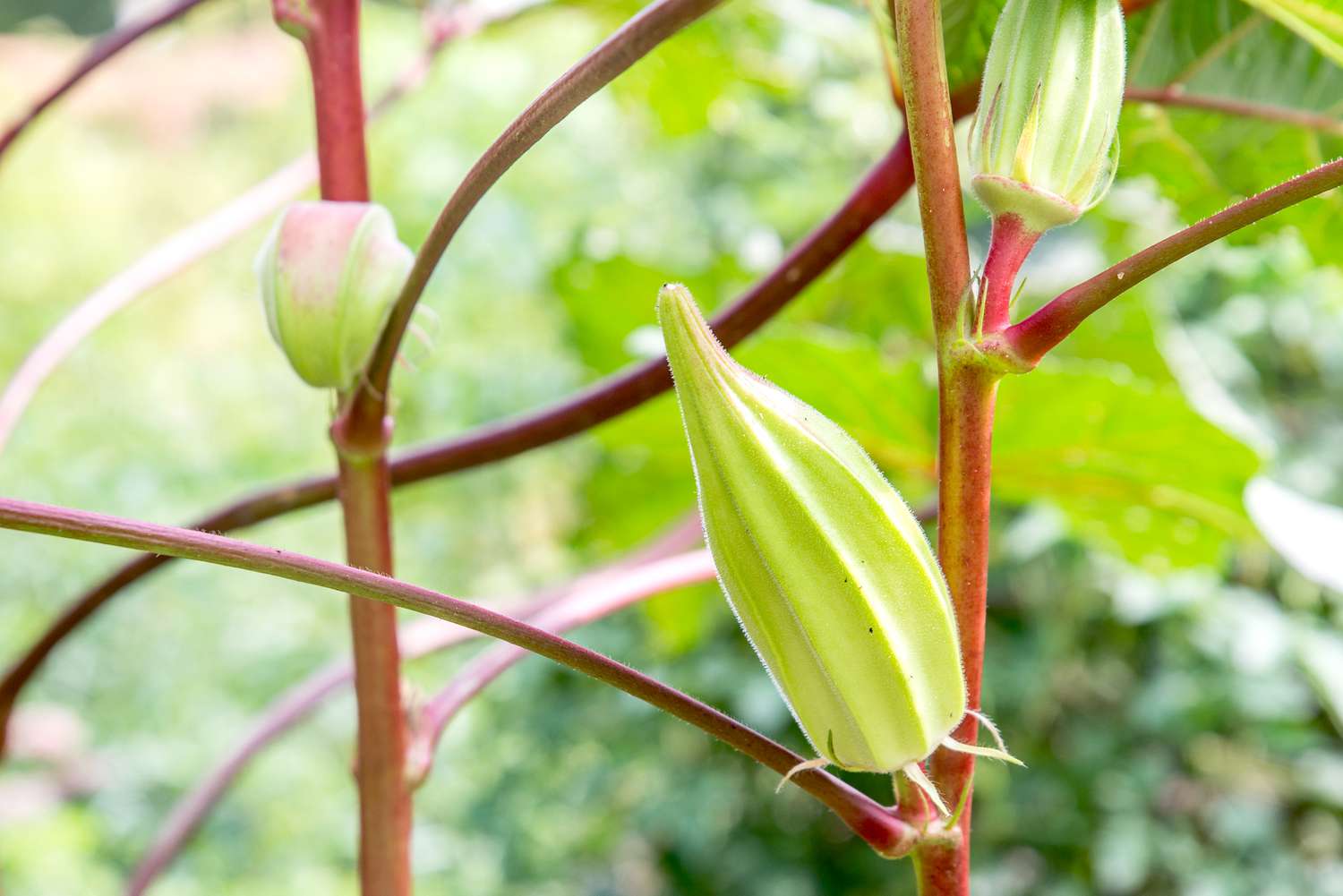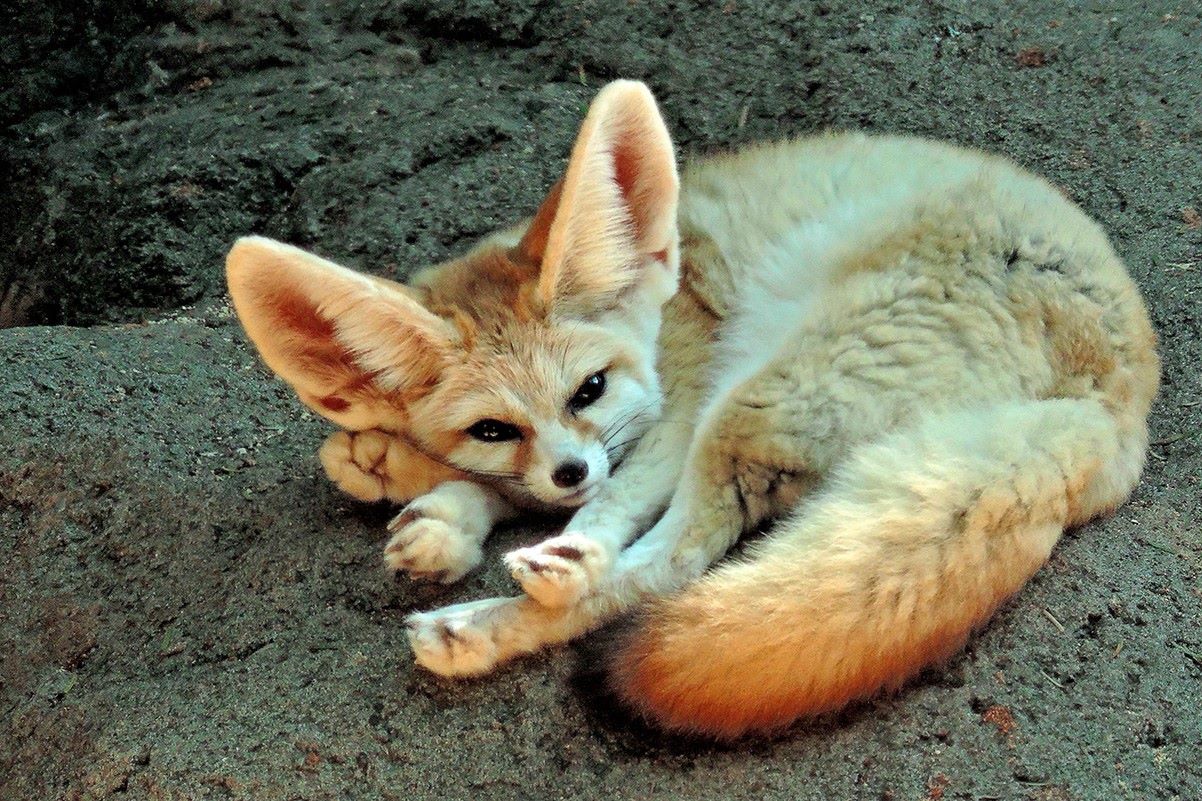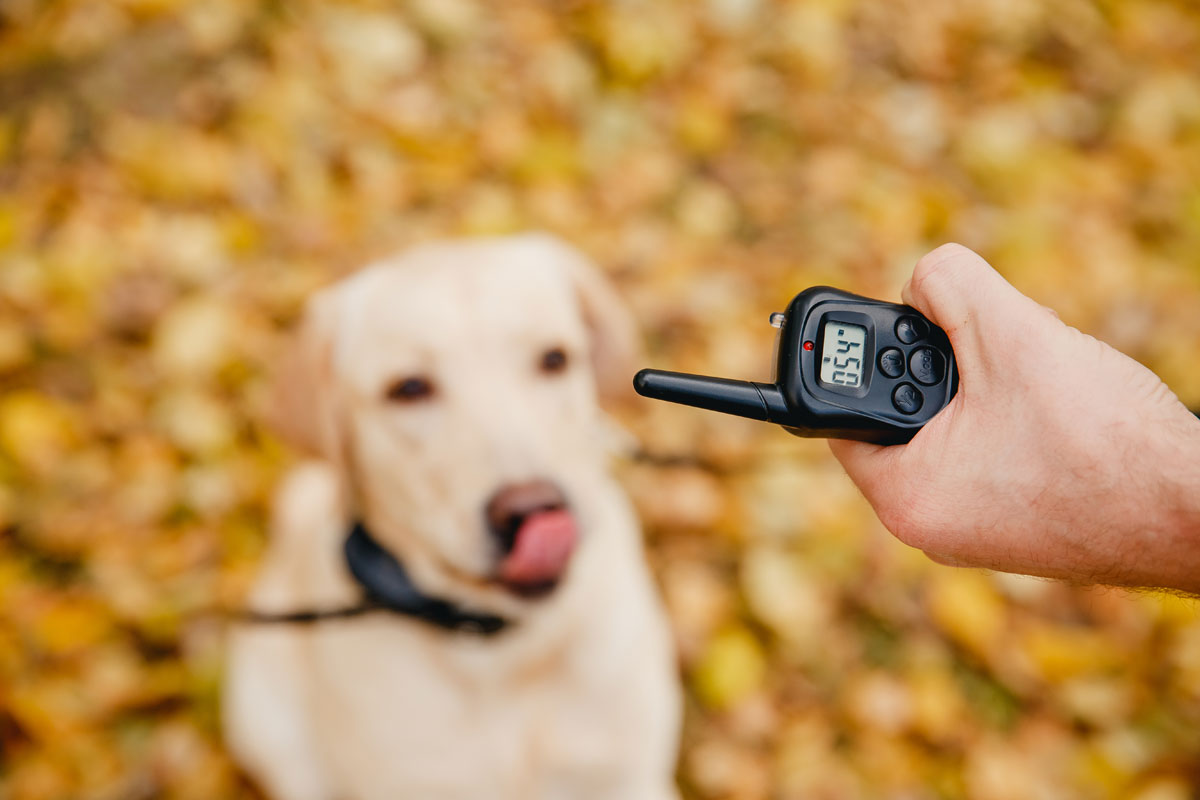Home>Home and Garden>Tips For Caring For Hostas In Containers


Home and Garden
Tips For Caring For Hostas In Containers
Modified: February 27, 2024
Discover expert tips for caring for hostas in containers in your home and garden. Learn how to keep your hostas healthy and thriving in pots.
(Many of the links in this article redirect to a specific reviewed product. Your purchase of these products through affiliate links helps to generate commission for Noodls.com, at no extra cost. Learn more)
Table of Contents
Choosing the Right Container
Selecting the right container is crucial for the successful growth of hostas. These shade-loving plants have specific requirements that should be considered when choosing a container. Here are some essential factors to keep in mind:
-
Size Matters: Hostas have extensive root systems, so it's important to choose a container that provides ample space for their roots to spread out. Opt for a container that is at least 12 inches deep and 12-18 inches wide to accommodate the plant's growth.
-
Material: When it comes to the material of the container, consider using porous options such as terracotta or wood. These materials allow for better air circulation and moisture regulation, which is beneficial for the health of the hostas. Additionally, they provide insulation against extreme temperatures, protecting the roots from potential damage.
-
Drainage Holes: Ensure that the container has adequate drainage holes at the bottom to prevent waterlogging. Hostas prefer moist but well-drained soil, so good drainage is essential to avoid root rot and other water-related issues.
-
Mobility: Since hostas may require different levels of sunlight and shade at various times of the year, consider choosing a container that can be easily moved. This flexibility allows you to provide the ideal growing conditions for the hostas, ensuring their overall health and vitality.
By carefully considering these factors when choosing a container for your hostas, you can create an optimal environment for these beautiful plants to thrive in a container garden.
Read more: Introduction To Containers
Selecting the Right Soil
Selecting the right soil is a critical aspect of caring for hostas in containers. The soil provides essential nutrients, supports root development, and influences moisture retention, all of which are vital for the health and growth of hostas. When choosing soil for container-grown hostas, several key factors should be taken into consideration.
First and foremost, it's important to opt for a high-quality, well-draining potting mix. Hostas thrive in soil that is rich in organic matter and has excellent drainage. A good potting mix for hostas should be lightweight, loose, and well-aerated, allowing the roots to access oxygen while retaining moisture. Look for a mix specifically formulated for shade-loving plants or one that is suitable for woodland species, as these will typically provide the ideal growing medium for hostas.
Additionally, consider amending the potting mix with organic matter such as compost, peat moss, or well-rotted manure. These amendments improve the soil structure, enhance moisture retention, and provide a steady supply of nutrients to the hostas. Organic matter also encourages beneficial microbial activity in the soil, promoting overall soil health and fertility.
Furthermore, it's advisable to avoid heavy, compacted soils or those prone to waterlogging, as these conditions can lead to root rot and other moisture-related issues. Hostas prefer consistently moist but well-drained soil, so choosing a soil mix that strikes this balance is crucial for their well-being.
When filling the container with soil, ensure that it is evenly distributed and gently tamped down to remove air pockets. This promotes good root-to-soil contact and stability for the hostas. After planting, a layer of organic mulch can be applied to the soil surface to help retain moisture, regulate soil temperature, and suppress weed growth.
By selecting the right soil for container-grown hostas, you can provide an optimal growing environment that supports their health and vitality. The soil serves as the foundation for the plants' well-being, and by choosing a high-quality, well-draining potting mix enriched with organic matter, you can set the stage for thriving hostas in your container garden.
Providing Adequate Drainage
Adequate drainage is a crucial element in the successful cultivation of hostas in containers. These shade-loving plants are particularly sensitive to waterlogged soil, making proper drainage essential for their health and vigor. Without effective drainage, excess water can accumulate around the roots, leading to oxygen deprivation and root rot, which can ultimately jeopardize the overall well-being of the hostas.
To ensure adequate drainage, it is imperative to select containers with sufficient drainage holes at the bottom. These holes allow excess water to escape, preventing it from pooling around the roots and suffocating the plant. When water is unable to drain freely, it can create a stagnant, oxygen-deprived environment that is detrimental to the root system. Therefore, the presence of drainage holes is non-negotiable when choosing containers for hostas.
In addition to the presence of drainage holes, the choice of potting mix also plays a significant role in facilitating proper drainage. Opting for a well-draining potting mix that is lightweight and porous allows water to permeate the soil easily and move through the container, preventing waterlogging. A high-quality potting mix specifically formulated for container gardening, with added perlite or vermiculite for improved drainage, can effectively support the health of hostas by ensuring excess water does not linger around the roots.
Furthermore, the use of a layer of coarse gravel or broken pottery shards at the bottom of the container can aid in drainage by creating a space for excess water to collect without saturating the soil. This simple yet effective technique helps prevent the soil from becoming waterlogged, safeguarding the hostas from the perils of excessive moisture.
Regularly inspecting the containers to ensure that the drainage holes remain unobstructed is essential for maintaining proper drainage. Over time, debris and soil particles can accumulate, impeding the flow of water. By clearing any blockages and ensuring unobstructed drainage, you can prevent water from accumulating in the containers and maintain a healthy growing environment for the hostas.
By prioritizing adequate drainage through the selection of appropriate containers, well-draining potting mix, and regular maintenance, you can create an optimal growing environment for container-grown hostas. This attention to drainage not only supports the health and vitality of the hostas but also mitigates the risk of water-related issues, allowing these beautiful plants to thrive in their container homes.
Watering and Fertilizing
Proper watering and fertilizing practices are essential for nurturing healthy and vibrant hostas in containers. These shade-loving plants have specific requirements when it comes to moisture and nutrients, and understanding how to effectively water and fertilize them is crucial for their overall well-being.
Watering
When it comes to watering hostas in containers, it's important to strike a balance between providing adequate moisture without overwatering. Hostas thrive in consistently moist soil, but they are susceptible to root rot and other moisture-related issues if the soil becomes waterlogged. To ensure optimal hydration for container-grown hostas, consider the following watering guidelines:
-
Consistent Moisture: Aim to keep the soil consistently moist, but not waterlogged. Hostas benefit from regular, deep watering sessions that penetrate the root zone, promoting healthy root development and overall plant vigor.
-
Morning Watering: Watering hostas in the morning allows the foliage to dry out during the day, reducing the risk of fungal diseases. It also ensures that the plants have access to moisture throughout the day, supporting their growth and vitality.
-
Avoid Overhead Watering: When watering hostas, it's best to avoid wetting the foliage, as this can increase the risk of foliar diseases. Direct the water towards the base of the plant to deliver moisture directly to the roots.
-
Monitor Soil Moisture: Regularly check the moisture level of the soil to gauge when watering is necessary. Inserting a finger into the soil or using a moisture meter can help determine if the soil requires watering.
Fertilizing
Fertilizing container-grown hostas is essential for providing them with the necessary nutrients to support their growth and foliage development. While hostas are not heavy feeders, they benefit from a balanced and slow-release fertilizer regimen. Here are some key considerations for fertilizing hostas in containers:
-
Timing: Apply a balanced, slow-release fertilizer in early spring as the hostas begin to emerge from dormancy. This provides them with the nutrients needed to support their initial growth and development.
-
Frequency: Reapply fertilizer in late spring or early summer to sustain the plants throughout the growing season. Avoid over-fertilizing, as excessive nutrients can lead to lush foliage that is more susceptible to damage from pests and diseases.
-
Application: When applying fertilizer, ensure that it is distributed evenly around the base of the plant, following the recommended dosage on the product label. Water the hostas after fertilizing to help the nutrients penetrate the soil and become accessible to the roots.
-
Organic Options: Consider using organic fertilizers, such as compost or well-rotted manure, to provide a natural and slow-release source of nutrients for the hostas. Organic fertilizers contribute to soil health and microbial activity, promoting a balanced and sustainable growing environment.
By adhering to proper watering and fertilizing practices, you can create an optimal growing environment for hostas in containers, supporting their health, vigor, and ornamental beauty. These essential care routines contribute to the overall success of cultivating hostas in containers, ensuring that they thrive and flourish in their confined yet nurturing habitat.
Protecting from Pests and Diseases
Protecting container-grown hostas from pests and diseases is essential for maintaining their health and ornamental appeal. These shade-loving plants are susceptible to a range of potential threats, including pests that feed on their foliage and diseases that can compromise their vitality. Implementing proactive measures to safeguard hostas from pests and diseases is crucial for ensuring their long-term well-being.
Pest Prevention
One common pest that poses a threat to hostas is the slug. These voracious feeders can cause significant damage to the lush foliage of hostas, leaving behind unsightly holes and blemishes. To deter slugs from targeting container-grown hostas, several preventive strategies can be employed. Applying a barrier of crushed eggshells or diatomaceous earth around the base of the plants creates a deterrent that can discourage slugs from reaching the foliage. Additionally, placing copper tape around the containers forms a barrier that repels slugs, preventing them from accessing the hostas. Regularly inspecting the plants for signs of slug activity and promptly removing any present individuals can also help mitigate potential damage.
Another common pest that can affect hostas is the snail. Similar to slugs, snails can feed on the foliage, leaving behind visible damage. Employing the same preventive measures used for deterring slugs, such as applying barriers and conducting regular inspections, can help protect container-grown hostas from snail infestations.
Disease Management
Hostas are susceptible to certain fungal diseases, with one of the most prevalent being powdery mildew. This fungal infection can manifest as a powdery white coating on the foliage, impacting the plant's aesthetic appeal and overall health. To mitigate the risk of powdery mildew, it is important to promote good air circulation around the hostas by ensuring they are not overcrowded in the container garden. Pruning any overcrowded or diseased foliage and maintaining a clean growing environment can help reduce the risk of powdery mildew.
Another common disease that can affect hostas is crown rot, which is often caused by overly wet or waterlogged soil. To prevent crown rot, it is crucial to prioritize proper drainage and avoid overwatering the container-grown hostas. Choosing containers with adequate drainage and employing well-draining potting mix can help mitigate the risk of this detrimental disease.
Natural Predators
Encouraging natural predators, such as beneficial insects and birds, can also contribute to pest control in the container garden. Ladybugs, lacewings, and predatory ground beetles are natural enemies of common pests like aphids and caterpillars, providing a natural form of pest management. Additionally, birds such as robins and wrens feed on slugs and snails, helping to keep their populations in check.
By implementing these preventive measures and proactive strategies, you can effectively protect container-grown hostas from pests and diseases, ensuring that they remain healthy, vibrant, and visually appealing. Vigilance, proper cultural practices, and the promotion of natural predators collectively contribute to creating a resilient and thriving growing environment for these beloved shade-loving plants.
Overwintering Hostas in Containers
Overwintering hostas in containers is a crucial aspect of their care, especially in regions with cold winters. Proper preparation and maintenance during the winter months are essential for ensuring the survival and vitality of these shade-loving plants. Here are key considerations for effectively overwintering hostas in containers:
Insulation and Protection
As temperatures drop during the winter, hostas in containers are more susceptible to frost damage. To protect them from extreme cold, consider insulating the containers. One effective method is to surround the containers with a layer of insulating material, such as straw or shredded leaves. This layer acts as a protective barrier, shielding the roots and soil from freezing temperatures and fluctuations. Additionally, wrapping the containers with burlap or frost blankets provides an extra layer of insulation, safeguarding the hostas from harsh winter conditions.
Moisture Management
Proper moisture management is critical during the winter months, as excessive moisture can lead to root rot, while prolonged dryness can cause dehydration and stress. It's important to monitor the moisture level of the soil in the containers, ensuring that it remains consistently moist but not waterlogged. Watering the hostas during dry periods and ensuring adequate drainage are essential for maintaining optimal soil moisture. Additionally, protecting the containers from excessive snow or rain can help prevent waterlogging and maintain a healthy growing environment for the hostas.
Read more: Running Apache In A Docker Container
Location and Sunlight
Choosing the right location for overwintering container-grown hostas is vital for their survival. During the winter, it's advisable to position the containers in a sheltered area that provides protection from harsh winds and extreme temperature fluctuations. While hostas are dormant during the winter months, they still benefit from some exposure to natural light. Placing the containers in a location that receives indirect sunlight helps prevent the plants from becoming overly dormant and supports their overall health.
Pruning and Cleanup
Before the onset of winter, it's beneficial to conduct a thorough cleanup and pruning of the hostas in containers. Removing any dead or decaying foliage helps prevent the spread of diseases and reduces the risk of pest infestations. Additionally, pruning back the foliage to a few inches above the soil level can help conserve the plant's energy and promote a healthier regrowth in the spring. By tidying up the containers and removing any debris, you create a cleaner and more conducive environment for the hostas to endure the winter months.
Monitoring and Maintenance
Throughout the winter, it's important to periodically check the containers and hostas for any signs of stress, disease, or pest activity. Addressing any issues promptly can prevent them from escalating and impacting the plants' overall health. Additionally, maintaining proper insulation and moisture levels, especially during periods of extreme cold or thawing, is essential for the well-being of the hostas.
By implementing these strategies for overwintering hostas in containers, you can effectively protect and nurture these beloved plants through the challenges of the winter season. With careful attention to insulation, moisture management, location, pruning, and ongoing maintenance, you can ensure that the hostas emerge from winter ready to thrive and flourish in the coming spring.












